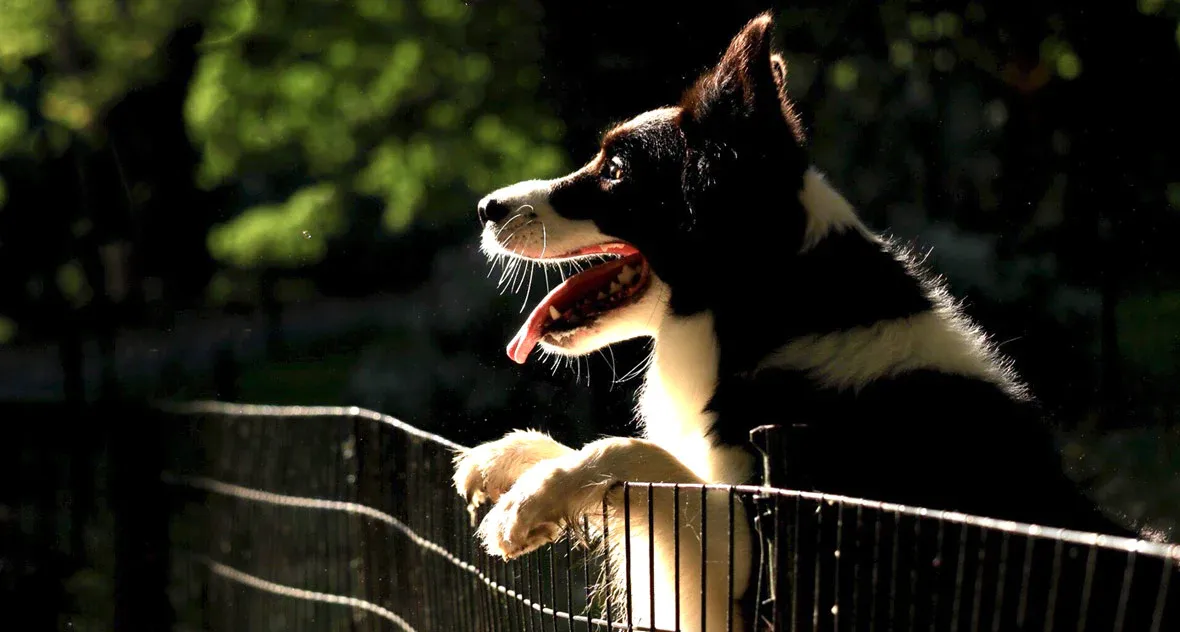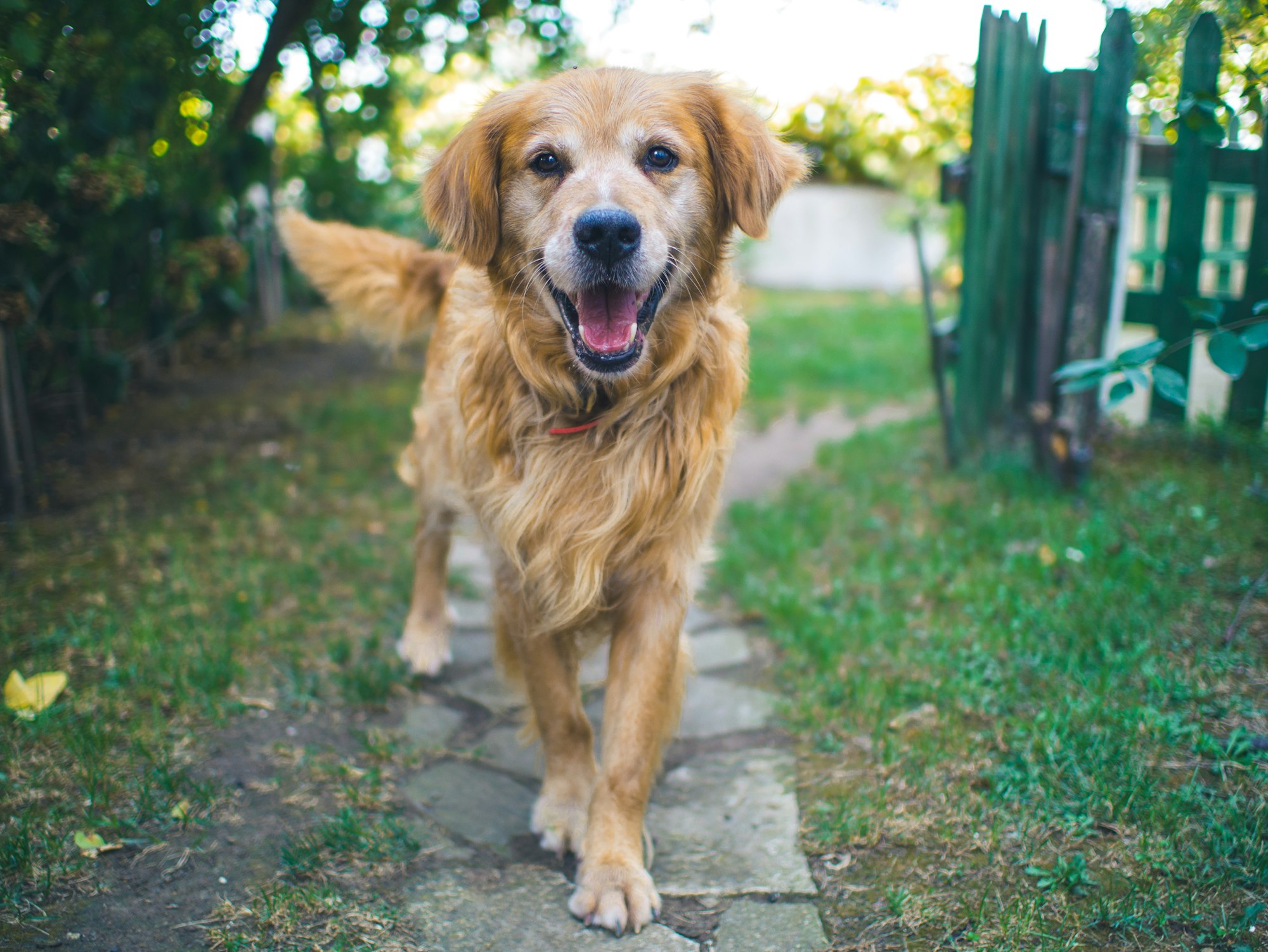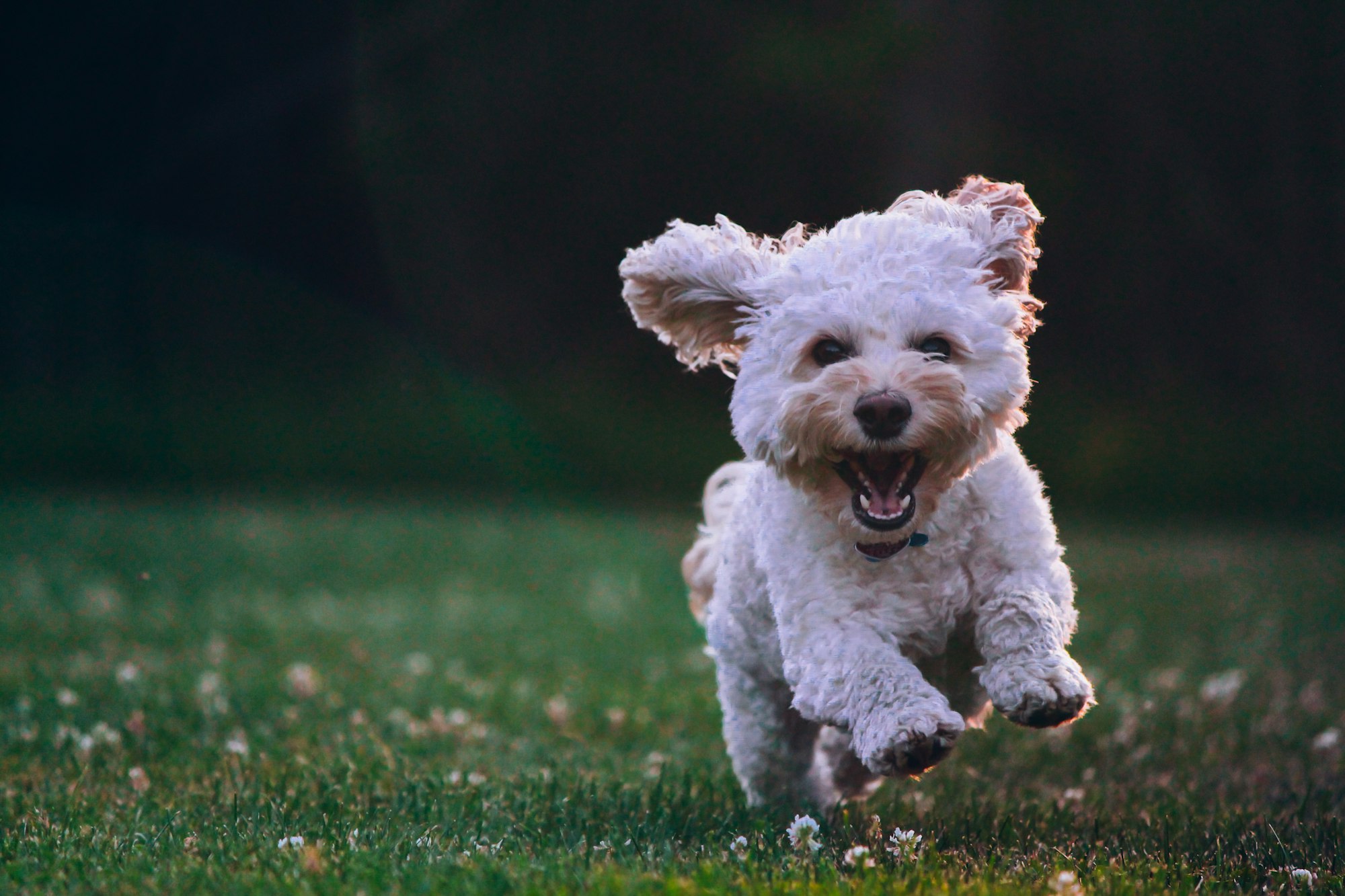When it comes to creating a safe and secure environment for our canine companions, one of the key challenges many pet owners face is keeping their dogs away from fences. Fences serve as critical boundaries that not only define our property lines but also play a vital role in ensuring the safety and well-being of our pets. Despite their importance, these barriers often become the focal point of a dog's curiosity and desire for exploration, leading to potentially risky situations.
Dogs may try to escape or get too close to fences for a variety of reasons. Some are driven by a natural instinct to explore beyond their known territory, while others may be motivated by external stimuli such as other animals, people walking by, or even the mere scent of adventure that lies beyond their home confines. Additionally, factors like boredom, lack of exercise, or insufficient mental stimulation can contribute to this behavior, pushing dogs to seek entertainment or escape by attempting to breach these boundaries.
Understanding these common reasons and the underlying motivations of our canine friends is crucial in implementing effective strategies to dog-proof our yards. By doing so, we not only protect our pets from potential hazards, such as getting lost or encountering dangerous situations outside the safety of their home, but we also maintain the integrity of our property and peace of mind as responsible pet owners. This article aims to guide you through various practical and compassionate methods to keep your dog safely within the confines of your yard and away from the fences, ensuring a happy, healthy environment for your beloved pet.

Understanding Dog Behavior
To effectively dog-proof our yards, it's crucial to delve into the reasons behind why dogs may feel the urge to escape or approach fences. This understanding not only aids in creating a safer environment but also fosters a deeper bond between dogs and their owners.
- Territorial Instincts: At their core, many dogs have a strong territorial instinct. This is a natural behavior where dogs feel the need to protect their home and family from perceived threats. When they see or sense something unusual through or over a fence, their instinctual response can be to investigate or guard their territory, which sometimes leads to them trying to get past the barrier.
- Curiosity: Dogs are naturally curious creatures. The world beyond the fence offers a myriad of smells, sights, and sounds that can be incredibly enticing to a dog's inquisitive nature. This lure of the unknown can often overpower their understanding of boundaries, leading them to find ways to explore beyond the fence.
- Seeking Attention or Social Interaction: Some dogs may approach or try to escape from fences as a way to seek attention or social interaction. Dogs are social animals and may feel isolated or bored in a yard, leading them to seek companionship or entertainment on the other side of the fence.
- Boredom and Lack of Stimulation: A common reason for fence-related issues is a lack of physical and mental stimulation. Dogs who are not sufficiently exercised or entertained are more likely to look for ways to amuse themselves, which can include attempts to escape the yard. This behavior often signifies that a dog's environment is not fulfilling enough for them.
Recognizing these behavioral tendencies is the first step in addressing them. To mitigate the urge to escape or approach fences, it is imperative to meet a dog's physical and mental stimulation needs:
- Physical Exercise: Regular exercise is fundamental. Depending on the breed, age, and health of the dog, this could mean daily walks, runs, or play sessions. Adequate physical activity helps expend excess energy that might otherwise be directed towards escaping or patrolling the fence line.
- Mental Stimulation: Engaging a dog's mind is just as important as physical exercise. Puzzle toys, training sessions, and interactive games can help keep a dog mentally stimulated. A mentally engaged dog is less likely to seek entertainment by challenging the boundaries of their yard.
- Environmental Enrichment: Enhancing the yard with features that engage a dog’s senses — like different scents, safe chew toys, and designated digging areas — can make the existing space more interesting and satisfying, reducing their curiosity about what lies beyond the fence.
By understanding and addressing these aspects of dog behavior, owners can create a more fulfilling and secure environment for their pets. This not only helps in keeping dogs away from fences but also contributes to their overall well-being and happiness.
Assessing Your Yard and Fence
Creating a dog-proof yard starts with a thorough assessment of your current setup. This evaluation will help identify areas that need reinforcement, as well as potential external attractions that might be drawing your dog's interest. Here’s a guide to effectively assess your yard and fence:
- Overall Yard Inspection: Begin with a general overview of your yard. Look for areas that your dog frequents or seems particularly interested in. Observe if there are specific spots along the fence line where your dog lingers more. This could indicate either an attraction on the other side or a potential weak spot in the fence.
- Fence Inspection for Weak Spots:
- Height and Depth: Check if the fence is high enough to prevent your dog from jumping over. For dogs that dig, ensure that the fence extends sufficiently below ground level.
- Gaps and Damage: Look for any gaps, loose boards, or damaged areas where a dog might squeeze through or widen the gap further. Pay special attention to gate areas, as they often have extra space underneath or around them.
- Climbable Features: Identify if there are objects near the fence that could serve as a stepping stone for your dog to climb over, like garden furniture, bins, or tree branches.
- Identifying External Attractions:
- Visual Stimuli: See if there are regular occurrences or visual attractions outside the fence that catch your dog’s attention, such as other animals, pedestrians, or moving vehicles.
- Auditory Stimuli: Listen for sounds that might be attracting your dog’s interest, like neighboring dogs barking or loud traffic noises.
- Olfactory Stimuli: Consider possible scents that might be enticing to your dog. This could be anything from food smells to the scent trails of other animals.
- Assessing the Surrounding Environment: Take a broader view of your property's surroundings. Are there elements that could be contributing to your dog's interest in escaping? For example, a neighboring dog visible through a chain-link fence could be a constant temptation.
- Safety Check: Ensure that the yard is free from hazardous materials or plants that could harm your dog. Also, make sure there’s adequate shelter, water, and a comfortable resting area.
- Observation and Notes: Spend some time observing your dog’s behavior in the yard. Take note of where they spend most of their time and how they interact with the fence. This can provide valuable insights into specific areas to focus on.

After completing this thorough assessment, you will have a clearer understanding of the modifications needed to make your yard more secure and less enticing for your dog to attempt escapes. This process is crucial in ensuring that the environment is not only secure but also enjoyable and safe for your pet.
Training and Behavior Modification
Training and behavior modification are essential components in ensuring that dogs respect yard boundaries. Effective training not only keeps dogs safe within their environment but also strengthens the bond between pets and their owners through clear communication and mutual respect. Here’s how to approach this important aspect:
Importance of Boundary Training:
- Safety and Security: Training your dog to understand and respect yard boundaries is crucial for their safety. It prevents them from venturing into potentially dangerous areas outside the yard and reduces the risk of getting lost or injured.
- Peace of Mind: Knowing that your dog will stay within the yard boundaries provides peace of mind for the owner, especially when the dog is left unsupervised for short periods.
Techniques for Boundary Training:
- Start with a Leash: Initially, use a leash to guide your dog around the perimeter of the yard, allowing them to explore the boundary under your control.
- Use Visual Markers: Place flags or cones along the fence line to create a visual marker for your dog. This helps them understand the limit they should not cross.
- Consistent Commands: Establish clear and consistent commands such as “stay” or “back” to signal when they are getting too close to the boundary. Consistency is key in ensuring that your dog understands and adheres to these commands.
- Gradual Expansion of Freedom: As your dog becomes more familiar with the boundaries, gradually increase their off-leash time in the yard, always supervising to ensure they don’t cross the limits.
Positive Reinforcement:
- Rewards for Compliance: Use treats, praise, or toys as rewards whenever your dog obeys the boundary rules. This positive reinforcement makes them more likely to repeat the desired behavior.
- Avoid Punishment: Negative reinforcement or punishment can lead to fear and confusion. Instead, if your dog crosses a boundary, calmly lead them back to the yard and reinforce the correct behavior with positive rewards.
- Consistent Training Sessions: Regular, short training sessions are more effective than sporadic, long ones. Consistency helps your dog understand and remember the boundaries.
Behavior Modification for Fence-Related Issues:
- Addressing Fence Running or Barking: If your dog exhibits behaviors like running along the fence or barking at stimuli outside, redirect their attention. Use commands or distractions to focus their behavior inwardly towards the yard.
- Desensitization: Gradually expose your dog to the stimuli that cause them to react at the fence (like other animals or people passing by) in a controlled manner, rewarding calm behavior to desensitize them to these distractions.
Through patient and consistent training and behavior modification, dogs can learn to respect yard boundaries effectively. This training not only enhances their safety but also improves their overall obedience and well-being. It’s a rewarding process that requires time and dedication but yields significant benefits for both the dog and the owner.

Incorporating Technology: The Role of Fi Dog Collars
In the quest to dog-proof yards and ensure the safety of our canine companions, technology can play a significant role. One such technological advancement is the Fi Dog Collar, a smart device designed to help monitor and manage a dog's movements and activities. Here’s how integrating a Fi Dog Collar can align with and enhance your efforts in keeping your dog safe within your yard boundaries:
What is a Fi Dog Collar?
- GPS Tracking: The Fi Dog Collar comes equipped with GPS tracking capabilities. This feature allows owners to monitor their dog’s location in real-time, which is particularly useful if a dog manages to escape the yard.
- Geofence Feature: Owners can set up a virtual geofence that matches the physical boundaries of their yard. If the dog crosses these boundaries, the collar will send an immediate alert to the owner's smartphone, enabling quick response.
Activity Monitoring:
- Monitor Behavior: The collar also tracks the dog’s activity levels, which can be helpful in understanding their behavior patterns. For example, if a dog is more active near the fence at certain times, owners can take preventive measures during those periods.
- Health Tracking: Regular activity monitoring contributes to ensuring the dog’s physical well-being, alerting owners to any changes in activity that might indicate health issues.
Integration with Training and Behavior Modification:
- Reinforcement of Boundaries: The use of a Fi Dog Collar can complement boundary training. While it doesn’t replace the need for training, it adds an extra layer of security and peace of mind.
- Data-Driven Insights: The data collected by the collar can provide valuable insights into the effectiveness of your training and behavior modification efforts. Adjustments can be made based on the dog’s response to different training strategies.
Safety and Convenience:
- Durable and Waterproof: Designed for all types of dogs and environments, the Fi Dog Collar is durable and waterproof, making it suitable for use in various yard conditions.
- Long Battery Life: With a long battery life, it reduces the frequency of recharging, ensuring that your dog is monitored consistently.
Community and Support:
- Lost Dog Mode: In the unfortunate event that a dog goes missing, the Fi Dog Collar’s ‘Lost Dog Mode’ can be activated, broadcasting the dog’s location to a community network to aid in the search.
- Owner Support: Fi provides a supportive community and customer service for users, offering tips and assistance in maximizing the use of the collar.
By incorporating a Fi Dog Collar into your yard and fence strategy, you add an advanced technological tool to your arsenal. It enhances your ability to monitor and protect your dog, provides insights into their behavior, and ensures a swift response in case of an escape. While technology should not replace physical barriers or training, it certainly can serve as a valuable complement in ensuring the safety and well-being of your beloved pet.
Conclusion
As we conclude our exploration into dog-proofing your yard and ensuring your furry companion's safety, it's important to reflect on the key points we've covered. From understanding the innate behaviors and motivations of our dogs, assessing and reinforcing our yards and fences, to incorporating training and technological aids like the Fi Dog Collar, each step plays a vital role in creating a secure and enjoyable environment for our pets.
Remember, the journey to a dog-proof yard is both a measure of safety and an act of love. It requires patience, consistency, and a deep understanding of your dog's needs and behaviors. By reinforcing fences, modifying the environment, and engaging in regular training and behavior modification, you are not only preventing potential escapes or accidents but also enhancing the quality of life for your dog.
Embracing technology, such as GPS-enabled collars, can provide an additional layer of security and peace of mind. However, these tools are supplements, not substitutes, for physical yard safety measures and training.
Ultimately, the goal is to create a harmonious space where your dog can play, explore, and rest safely within the boundaries of your home. As you implement the strategies outlined in this article, keep in mind that every dog is unique, and what works for one may not work for another. Be prepared to adapt and tailor these methods to suit your individual dog's personality and needs.
In the end, the efforts you put into dog-proofing your yard will pay off in the form of a happy, healthy, and safe companion who can enjoy their outdoor space to the fullest. So, embark on this journey with enthusiasm, knowing that you are enhancing your beloved pet's overall well-being and deepening the bond you share with them.




